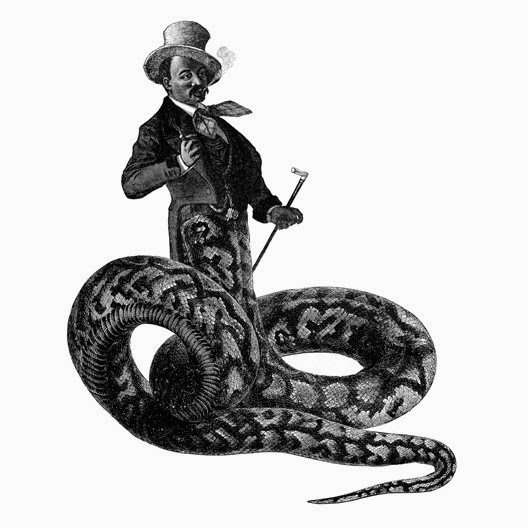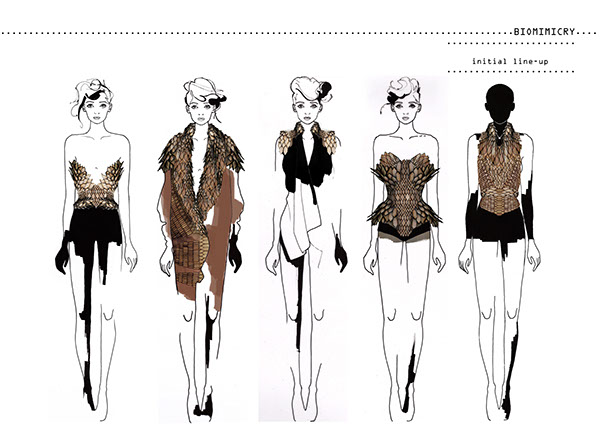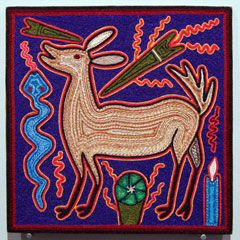In a Natural Fashion
 |
| Antoine Helbert |
How does nature
influence fashion and visual culture? How does nature inform contemporary
fashion culture? How does nature influence you?
Nature has been
interwoven with the history of human culture and art production for millions of
years. Students will view the work of contemporary artists and fashion
designers to reveal personal connections to nature in their own lives.
Some important questions
for students to consider: how does an animal’s appearance set it apart from
other animals? Does their appearance or skin (size, shape, fur, scales, fins,
claws) have a specific function or message? Why do you think some fashion
designers draw upon the influence of nature in their designs? What animal do
you identify with the most in terms of visual appearance? What animal do you
identify with the most in terms of personality? WHY?
In this project you
will create a fashion headshot or figure drawing of yourself with animal
attributes. You are not limited to one animal for your portrait however you
will be creating a fashion design for your portrait, so keep in mind function
and appearances. The goal of the project is to appropriate attributes and components
of animals that inspire you and with which you relate. There will be a
rationale/artist statement component required for this project.
a View contemporary artists and fashion
designers.
a Discuss how nature influences our visual
(fashion) culture.
a Discuss why visual culture is important in
nature.
a Facilitate the creation of parallels between
students and animals with which they identify.
a Teach students to use limited color schemes.
a Teach students about appropriation in
relation to identity.
a Teach students to draw figures and faces, which
are not entirely based in visual realism.
Key Concepts for Lesson
1. Nature and culture interact with and impact
each other.
2. Nature informs culture.
3. Nature and culture have their own visual
cultures.
4. Nature and culture are full of diversity.
Essential
Questions for Lesson:
1. How does Nature inform or influence Culture?
2. What effect does visual culture have on daily
life?
 |
| Dan Hillier |
Lesson
Plan
Explore
Comparison and Appropriation: Animals and
fashion. Consider fashion
designs by Alexander McQueen, Stefanie Nieuwenhuyse and
how the designers are influenced by nature. Think about the use of pattern,
texture, and function in the animal world and the visual impact they have on
fashion designs. Discuss the parallels between natural elements and the
attributes of animals and their use in fashion designs. You are not limited to one animal for your
portrait however you will be creating a fashion design for your portrait, so
keep in mind function and appearances.
Identity: What animal(s) do you relate to? Consider illustrations by Dan Hillier and Antoine Helbert and sculpture by Liu Xue and how they utilize different postures of the human form
to communicate attitudes, ideas, and personalities. Does the animal used in the
‘humanimal’ form tell you something about the human figure? In this project you will create a fashion
headshot or figure drawing of yourself with animal attributes. You will
appropriate attributes and components of animals that inspire you and with
which you relate. We will brainstorm in class about animals and have periodic
assessments of progress and idea development.
Visual Culture: How is marketing influenced by nature? As part of an inspiration board we will individually seek out advertisements that utilize animals, plants, patterns, and other imagery found in nature. We will discuss how advertisements transfer animal qualities to human models and personalities. Personification and anthropomorphism will also be discussed and explored through imagery and personal connections.
Artists
Pinterest page “Au
Naturale”: http://www.pinterest.com/jamic/au-naturale/
Alexander McQueen
Liu Xue
Gather
We
will sort images of fashion designs/runway styles according to animal type and
discuss reasoning for each visual and design choice. As a class we will create
an inspiration wall of found images and inspirational words to motivate and
stimulate ideas for everyone in the class.
After
brainstorming in class, students will choose one or more animals with which
they relate on a personal, visual, or some other level. We will each create a
concept map of personality ‘quirks’, fashion preferences, animal experiences,
and rationales for each decision. Rationales will be helpful for the final
written response.
Draw
Make
sketches of classmates in various postures and poses to practice figure
drawing. Draw from model photographs and inspiration board images to refine
understanding of process. Draw images of yourself in your sketchbook and become
familiar with your OWN proportions and features.
Begin
Begin
with an 18 x 24 white or black paper.
Do
a pre-drawing of your figure or portrait – keep in mind the usage of space on
your drawing surface. Think ahead: do you want to be recognizable in your
portrait or figure study?
Use
pastels, colored pencils, pencil, marker – any drawing medium is allowed.
However, only choose ONE after you start.
Elaborate
After
drawing the figure or portrait begin to add natural attributes to your human
form.
Think
ahead: will you be creating a realistic or conceptual representation of your
animal(s)? Utilize your media accordingly.
Add
details and identifying characteristics for your animals AND your personal
appearance.
Write
and Record
As you create your image you may
find that your ideas change.
Write: your concepts, your
inspirations, your reasons for decisions, and your steps to completion of the
work. Were you inspired by a classmate’s words or ideas? Do you want to evoke a
mood or feeling in your work?
Remember: a written response is
required for this piece. Taking notes and making observations during the
creative process will organize your thoughts for the response.
Share
and Reflect
Display
the finished work in the classroom for peer critique. Each student will review a
work that is not their own according to the following criteria: Originality,
content, observational skills (technical skills). Students will write their
responses to their work from information gathered during the creative process
as well as reflections after completion.
This lesson is going to be part of my larger unit plan, Nature and Culture.. Planning planning planning! I have big plans for the rest of this unit and I will post my ideas on here as I go. :)
Ms. K



























